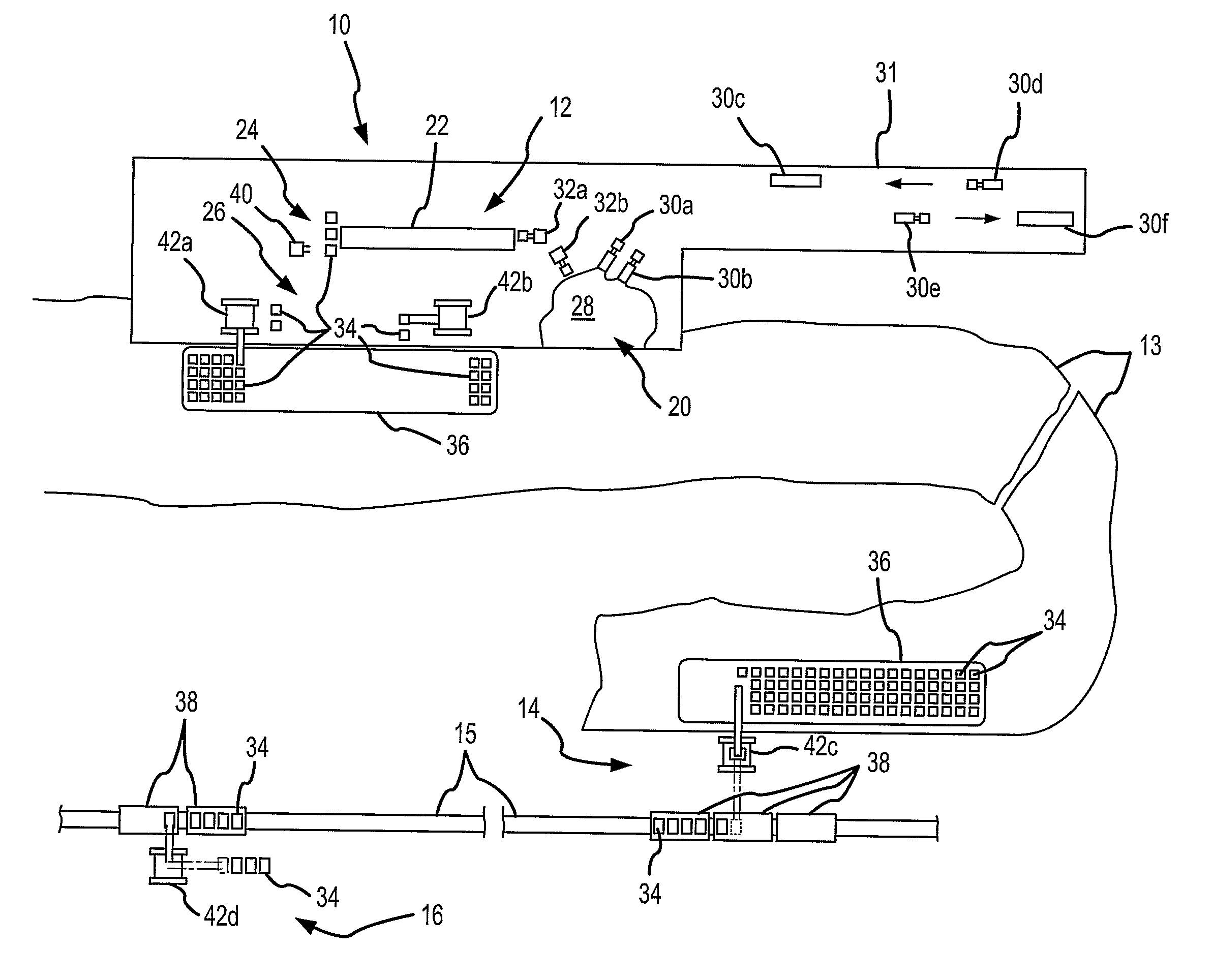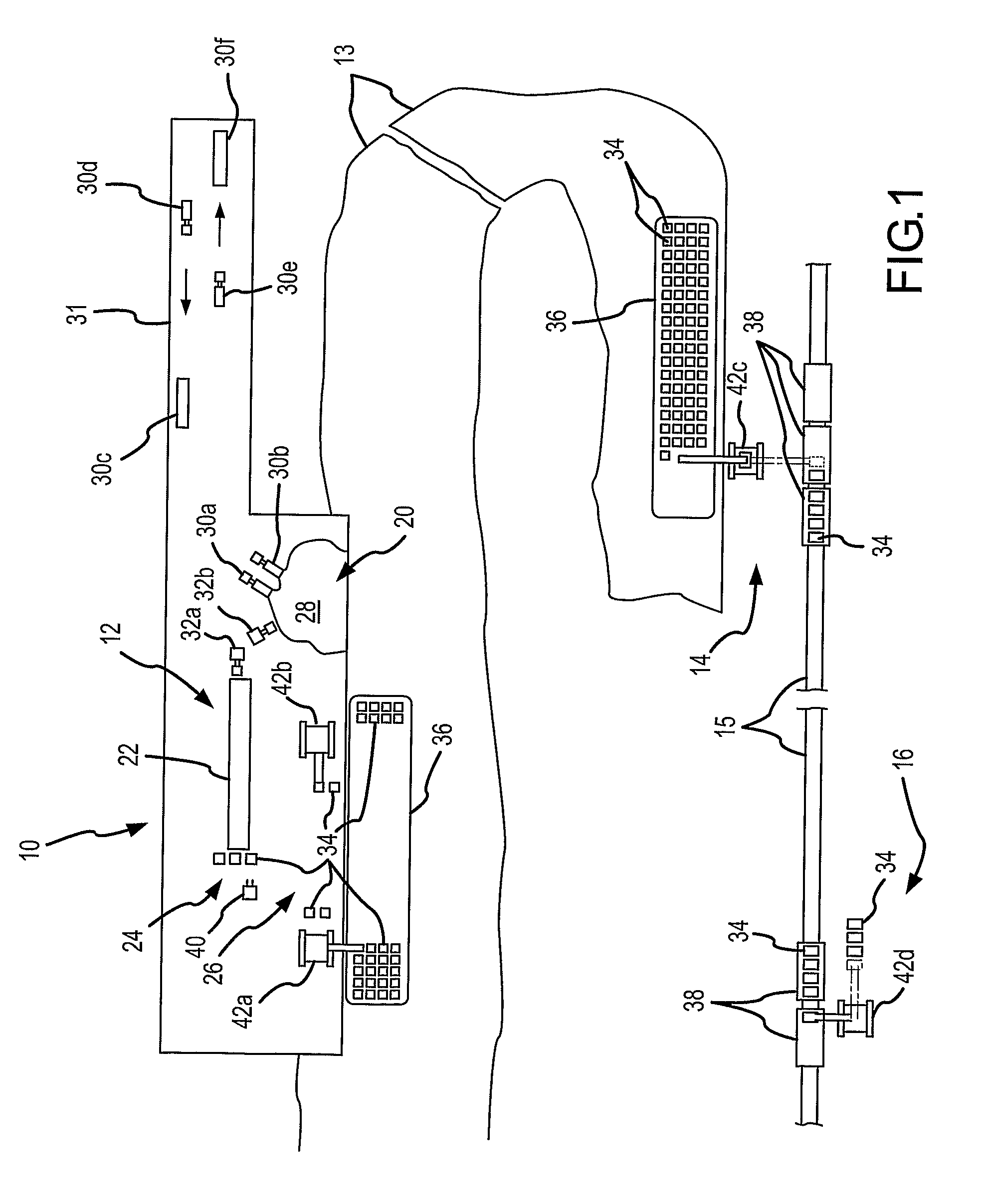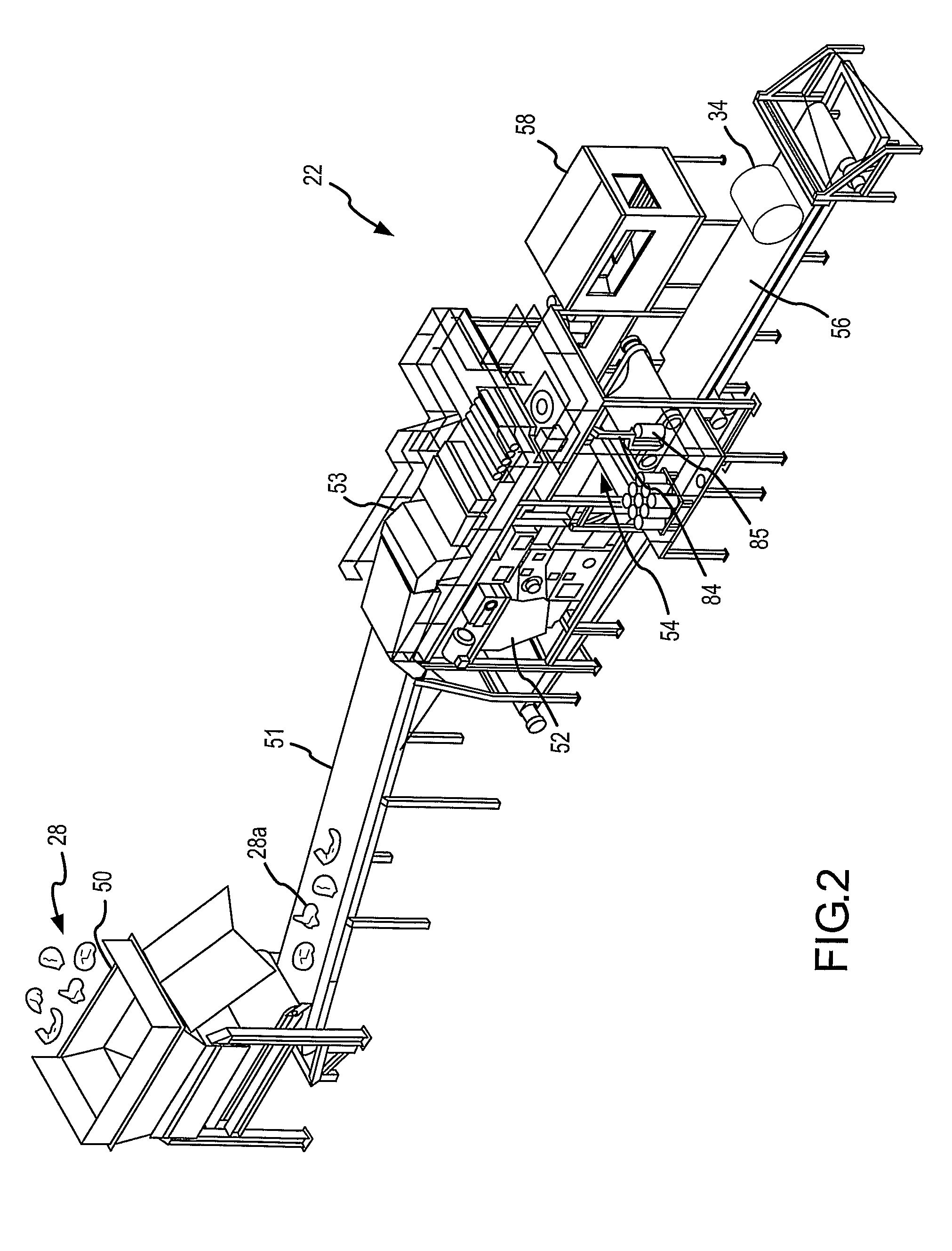Systems and methods of processing and transporting waste
a waste and waste technology, applied in the field of waste management, can solve the problems of reducing the available weight-carrying capacity, introducing physical and economic challenges to the transportation of loose waste, and heavy weight and/or cost of vehicles and/or shipping containers, etc., to achieve the effect of reducing or eliminating odor and contamination problems, reducing or eliminating the whole problem of odor and contamination, and efficient processing and transportation
- Summary
- Abstract
- Description
- Claims
- Application Information
AI Technical Summary
Benefits of technology
Problems solved by technology
Method used
Image
Examples
Embodiment Construction
[0022]FIG. 1 is a top plan view of an exemplary waste processing and transportation system 10 according to the present invention. Exemplary system 10 may comprise a waste processing facility 12, a waste transfer facility 14, and a waste disposition facility 16 (e.g., disposal, incineration, recycling, and / or energy conversion facility). In the exemplary embodiment shown in FIG. 1, the waste processing facility 12 is linked to the waste transfer facility 14 via a waterway 13; and the waste transfer facility 14 is linked to the waste disposition facility 16 via a railway 15. It is noted, however, that the system 10 is not limited to any particular configuration. For example, waste processing facility 12, waste transfer facility 14, and waste disposition facility 16 may be operatively associated with one another via roads, waterways, railways, and / or any combination thereof. In addition, the waste processing facility 12 may be operatively associated with a plurality of waste transfer f...
PUM
| Property | Measurement | Unit |
|---|---|---|
| weight | aaaaa | aaaaa |
| diameter | aaaaa | aaaaa |
| weight | aaaaa | aaaaa |
Abstract
Description
Claims
Application Information
 Login to View More
Login to View More - R&D
- Intellectual Property
- Life Sciences
- Materials
- Tech Scout
- Unparalleled Data Quality
- Higher Quality Content
- 60% Fewer Hallucinations
Browse by: Latest US Patents, China's latest patents, Technical Efficacy Thesaurus, Application Domain, Technology Topic, Popular Technical Reports.
© 2025 PatSnap. All rights reserved.Legal|Privacy policy|Modern Slavery Act Transparency Statement|Sitemap|About US| Contact US: help@patsnap.com



